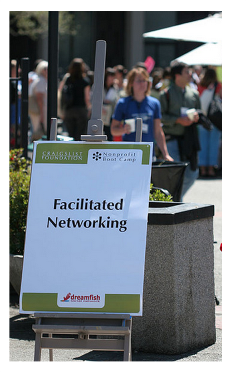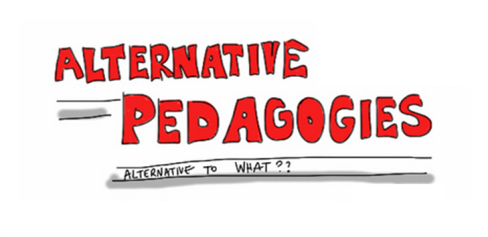With my colleagues at the VCU Center for Teaching Excellence, we have challenged ourselves this Fall to dedicate time each week to exploring a learning framework that has informed our work for years – the Community of Inquiry Framework. Or as Bud Deihl so eloquently stated, we are starting a Community of Inquiry about the Community of Inquiry. The Community of Inquiry Framework flowed out of work done by Randy Garrison, Terry Anderson, and Walter Archer in Canada back a decade ago. I made Terry’s ebook The Theory and Practice of Online Learning a cornerstone of my course on The Theory of eLearning, and the CoI has factored in to our Preparing to Teach Online course as well as our Online Course Development Initiative. So, there is a good bit of legacy associated with our use of CoI…which should suggest that it is time to question our assumptions. I hope to journal our journey in this blog and use it for my own reflections into the CoI and why it resonates so well with me. I am looking to my colleagues to push back and challenge my assumptions as the semester unfolds…and I would invite readers of this blog to do the same.
We started our process by collectively reading Randy Garrison’s second edition of E-Learning in the Twenty-First Century: A Framework for Research and Practice. I mentioned last month in a blog post that I was rethinking fundamentals, and situating community front and center in the design of online learning is certainly one of those fundamentals. Garrison’s Second Edition lays out the conceptual framework for CoI – including the overlapping three presences – social, cognitive, and teaching. Garrison’s point (which aligns with those we made in our White Paper – Building from Content to Community) is that new media allow for new opportunities, and that it is a mistake to try and integrate this new media into “passive educational approaches.”
Garrison noted that it “is not issues of access to information but the connection to others that distinguishes e-learning from both conventional face-to-face or distance education.” From his perspective, learning is shaped by a collaborative constructivist view, with discourse inseparable from critical thinking. Critical thinking is both highly individualistic and shared…we co-construct our knowledge with others. This connected learner framework lies behind the design of my courses. Whether working with undergraduates or doctoral students, I have endeavored to facilitate connections and then let the connections facilitate the learning. Garrison spends a chapter each on social presence, cognitive presence, and teaching presence, from both the faculty and the student perspective. I intuitively see how each of these presence play out with faculty and with students, but I am still working on operationalizing and articulating this to my students. So the practical applications in the second half of Garrison’s book are helpful for me.
Our study group spent much of yesterday defining how each of us viewed CoI, and what we hoped individually to get out of our study. We are coming to terms with the fact that we need to better understand CoI before we can adequately examine alternatives to CoI. Garrison noted in his final chapter that there is still much work to be done. From his perspective, higher education has in some ways failed to examine the affordances of the web. He noted that we have had a decade long infatuation with personal information and inexpensive communications, and the challenge now is to understand how these developments can enhance the ideals and values of higher education. He suggested that the past decade was one of turmoil  and confusion…that it is time to stop focusing on technology and return to a focus on educational needs. The pedagogy from his perspective lagged the technology. If one agrees that a sense of community is crucial to student satisfaction, persistence, and engagement, then it follows that one would develop elearning in web-enhanced, blended, and totally online classes from a CoI framework. This opens up new areas for research in the Scholarship of Teaching and Learning.
and confusion…that it is time to stop focusing on technology and return to a focus on educational needs. The pedagogy from his perspective lagged the technology. If one agrees that a sense of community is crucial to student satisfaction, persistence, and engagement, then it follows that one would develop elearning in web-enhanced, blended, and totally online classes from a CoI framework. This opens up new areas for research in the Scholarship of Teaching and Learning.
Garrison listed numerous questions for further research. What new practices are suggested for faculty incorporating the CoI Framework into their courses? What are the causal relationships among the three presences? How do students differentiate between cognitive presence and teaching presence? In creating community, which are more important – course goals or interpersonal relationships? What is the balance between facilitation and direct instruction? Could the CoI Survey be used as a formative diagnosis instrument? Are there disciplinary differences in applying the CoI? Does application in blended learning look different than totally online learning?
There is no way in this blog post to capture the pure enjoyment that comes from having an intellectual and collegial conversation with team mates. I work with an amazing group…and that was reinforced yesterday. As was evident yesterday, we each have a vocabulary that comes to bear as we talk…and asking for clarification between us led to new understanding for me. We have a new CTE Grad Fellow joining us – and Laura dove right in to the discussion and research. She crafted a neat literature review of dozens of articles on CoI that was extremely helpful, including a retrospective from Garrison, Anderson and Archer. I am looking forward to our collective examination of Community of Inquiry…and our continued growing of our own community.
{Graphic: Giulia Forsythe, love2dreamfish}



I would add to Garrison’s statement “is not issues of access to information but the connection to others (**outside of our physical location; i.e. anywhere with internet connectivitiy) that distinguishes e-learning from both conventional face-to-face or distance education.”
Thanks for summarizing our inaugural conversation and referencing great materials.
Hi Britt!
Nice summation, thank you. I did a pictorial representation of the meeting. You can find it here:
http://knockingonwood.edublogs.org/